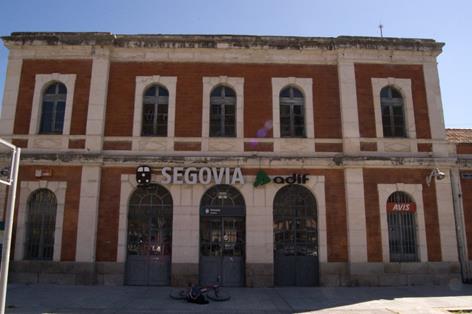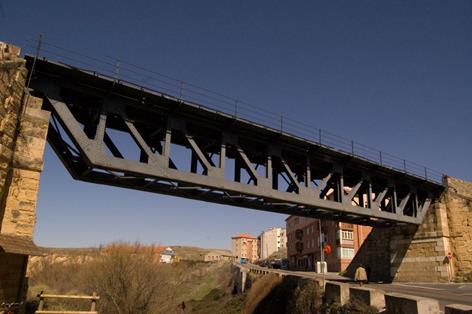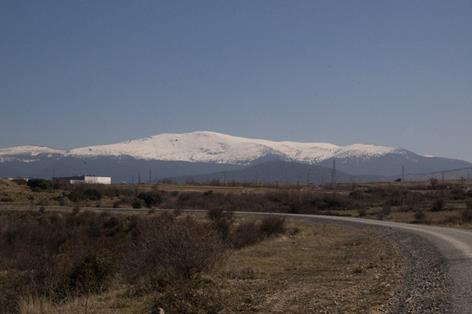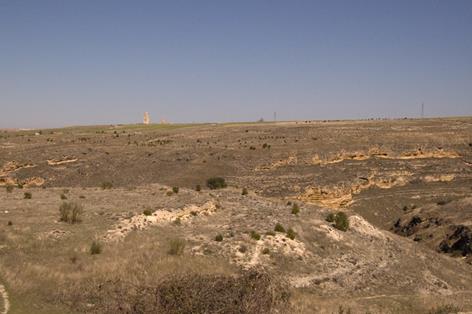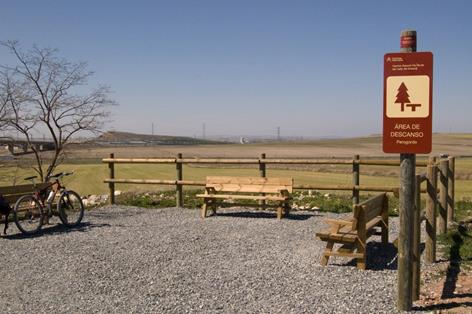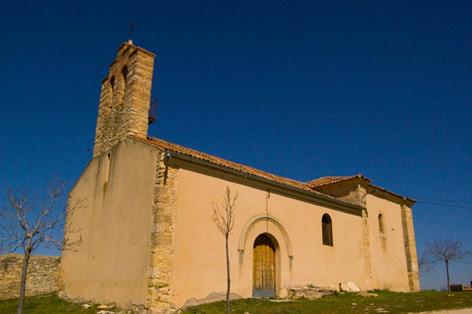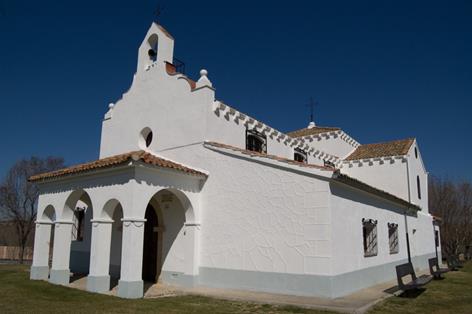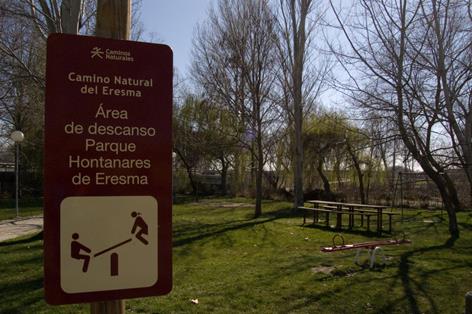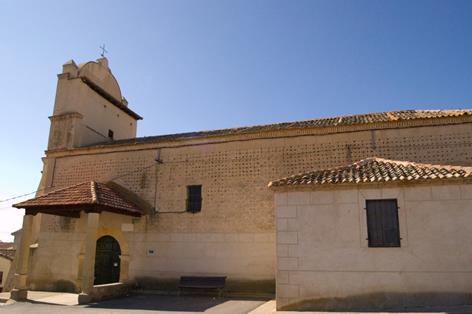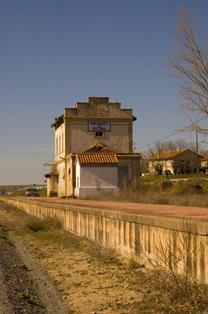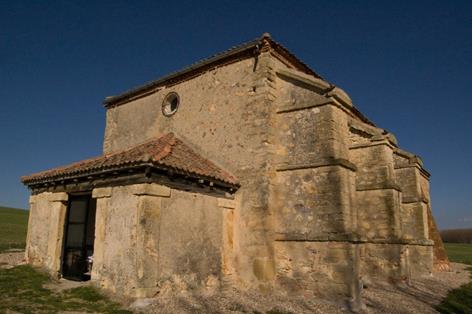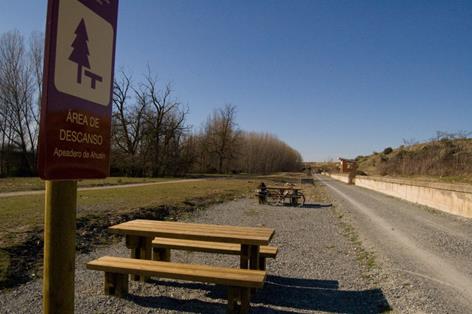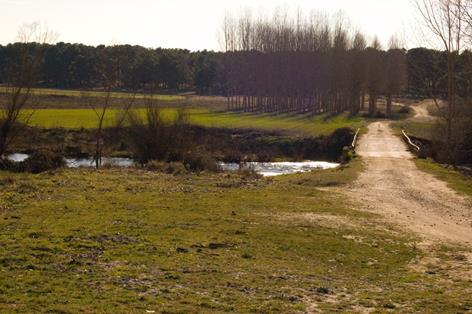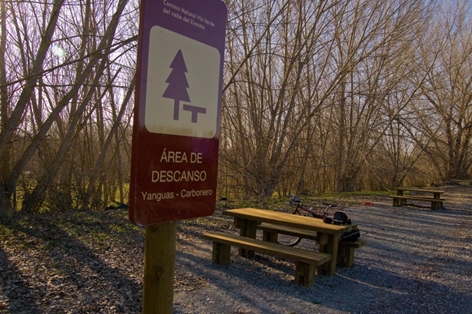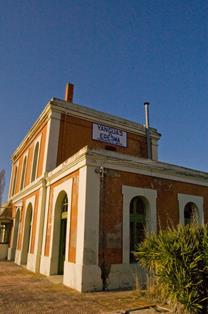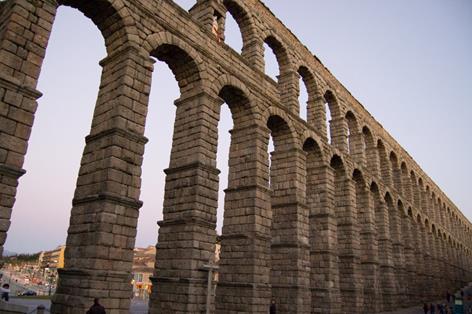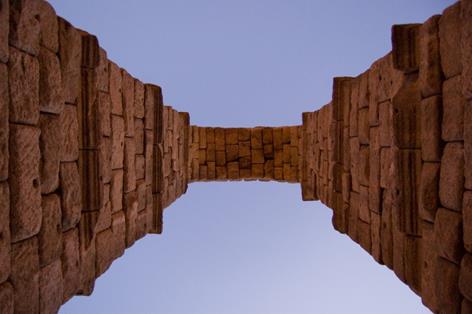- Home
- Rural Development
- Nature Trails
- Nature Trails
- Central Sector
- Valle del Eresma
Section 1: Segovia (Puente de Hierro) - Estación Yanguas-Carbonero
Description

Today where the River Eresma contemplates trekkers and cyclists, for over 100 years it watched trains pass by
The extensive valley of the River Eresma is land that has been highly appreciated by man. Inhabited for thousands of years, these meadows were cultivated and transformed by human beings for their settlements. In this way, the original Holm and Pyrenean oak forests that flanked the riverside gave way to expanses of cereal crops and poplar forests. The River Eresma has witnessed all of these changes, ranging from the transportation of passengers and goods by train and making their journeys more agreeable with its greenery to, at the present time, lending its freshness to nature lovers who complete this Nature Trail that uses the old route of the Segovia–Medina del Campo railway line; although, this time by any non-motorised form of transporto.
The route leaves from the monumental city of Segovia, presided by its impressive and well-preserved Roman aqueduct and accompanied by its splendid cathedral and majestic castle. This trail is ideal for cycling with the whole family because its route is easy and gentle, allowing you to spend a pleasant day visiting the beautiful city of Segovia.
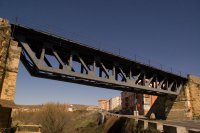
This Nature Trail, the old railway route used from 1884 until 1993, begins at the Iron Bridge (or Tejadilla Bridge), passing under it, and immediately after a short climb, arrives at the Segovia rest area (Iron Bridge).
From this point onwards and as far as kilometre 4 of the Nature Trail, the itinerary keeps strictly to the route of the old railway line, leaving the city of Segovia behind it. The terrain permitting, you can catch sight of the castle and the cathedral.
A little after passing kilometre 1, the itinerary crosses the Perogordo tunnel, which measures 176 m long. The first two kilometres of the trail cross land covered with scarce vegetation and the Tejadilla stream, with its rocky outcrops and boxed-in valley, flows on the right of the route.
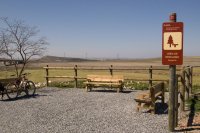
After kilometre point 2, the landscape changes to give way to dry cereal crops. The route of the railway line, which coincides with the trail, passes below a bridge to then reach kilometre 3 where, a few metres further on, you come to the town centre of Perogordo with its church welcoming travellers and the Perogordo rest area nearby.
On continuing along the trail, the itinerary passes below the route of the Madrid –Valladolid High Speed Train (AVE), and this point marks the beginning of a shared section for 4.8 km; so you should take great care. Along this section, the new high-speed line has occupied the old railway platform. A few metres further on, the trail crosses the bridge that passes over the N-110 highway, although its route is situated to the left of the high-speed line, running parallel to it.
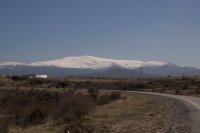
On the left, you will leave Segovia Prison behind you, and to reach kilometre 5, you climb a small ledge that ends at a crossroads above the track. Nevertheless, you should ignore the crossroads and carry on straight ahead. In this section, if you glance behind you, you can see the Sierra of Guadarrama, which in the wintertime may be covered with a white blanket of snow.
A little after kilometre 6, you should cross the road, taking great care, passing some sports facilities on your left. The route continues parallel to the AVE railway line and crosses under the CL-605 highway. Further on, you cross a small wooden walkway that marks the end of the shared section, coinciding with kilometre 8 of the itinerary.
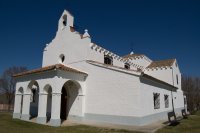
A green meadow then marks your arrival at the chapel of Nuestra Señora de la Aparecida where pilgrimages are held every year and which allows travellers to stop and pay a visit along the trail. Some metres further on, the route crosses the road that accesses the Nicomedes García industrial estate to then, 250 m later, pass over to the other side of the AVE railway track via a low underpass, which marks the beginning of a shared 360 m section immediately afterwards.
When the shared section comes to an end, the trail turns sharply to the left, returning to the old railway track route to then, from this point onwards, run next to the River Eresma, which it does not leave until the end of the trail.
A few metres before reaching kilometre 10, you cross the Lobones bridge over the River Eresma, where you can see a riverside wood containing numerous species such as willows (Salix sp.), poplars (Populus nigra and Populus alba), etc. Once you have crossed the bridge on the right of the trail, you can see, in a fenced estate, the Caserío de Lobones, large specimens of Holm oaks (Quercus ilex) and ashes (Fraxinus angustifolia). Pollarding, which consists of the extreme pruning of all the trees’ branches in order to conserve a large short trunk, is still carried out here. This practice is done so that the leaves and fine branches can be used as cattle feed and even as beds in stables and the thicker branches as firewood.
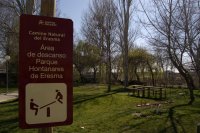
After a crossroads of trails, on the right of the route you can see the Caserío de Lobones, and to the left the ruins of what could have been an old mill. Cereal crops are increasingly present on the right-hand-side of the trail and to the left production poplar plantations prevail.
After kilometre 11, you temporarily abandon the route of the old railway line to continue parallel to the meanders of the River Eresma, reaching the town of Hontanares de Eresma. At this point, the route crosses the River Eresma Nature Trail, so you must pay attention and follow the signs for the River Eresma Valley Nature Trail. Taking great care, you cross the Valseca road to reach the Hontanares de Eresma Park rest area, in front of the municipal sports facilities.
On circling the sports facilities, a little later on you will come to the Hontanares de Eresma Station rest area, which will allow you to make a stop on your trail. A little further on, you once again return to the track route, passing by the old Hontanares station once you have passed kilometre 13.
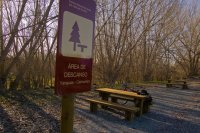
Continue along the trail, where, just before kilometre 15, one of the River Eresma’s tributary streams passes below the route and, a kilometre later, the Roda stream flows across it. A turn-off then emerges on the right to the chapel of Nuestra Señora de las Vegas, which is approximately 350 m off the route. When you return, the next section, which is approximately 2 km long, coincides with the Santiago Trail. Once you have passed kilometre 18, the trail arrives at the Ahusín Halt rest area and the old railway halt that lends it its name.
The route continues under the SG-V-3312 highway and, a little further on, crosses the short Ahusín tunnel (118 m), where travellers will always have its end in sight as a reference.
As occurs throughout most of the trail, the next kilometres, which always follow the course of the River Eresma on the left, continue along an almost unnoticeable slope.
At kilometre 24, the route crosses over the Encinar stream that flows into the River Eresma and, one kilometre further on, trekkers come to the old Yanguas de Eresma station, in the town of Carbonero El Mayor, which, in conjunction with the Yanguas –Carbonero rest area, marks the end of the Valle del Eresma Nature Trail (Segovia –Estación Yanguas section).
Sites of interest
Map
Puntos de Interés
Hidrografía
Información
Profile

MIDE (Method for the Information of Excursions)
Featured
Further information
The Shrine of Nuestra Señora de la Aprecida
This shrine was built in the 17th century and legend tells that some shepherds who were building a cabin found the image on a hill. In the wake of the finding, the inhabitants decided to build a chapel a little further down from the place where the image was discovered, but on returning every morning, they found that the previous day’s work had been destroyed. They then decided to build the chapel on the hill where the image had been found; on this occasion, no incidents whatsoever occurred.
The shrine has undergone several refurbishments, the most important taking place in 1959. Every year, on the second or third Saturday of June, the traditional pilgrimage of Nuestra Señora de la Aparecida, the patron saint of the town of Valverde del Majano, is held, where the image is taken out in a procession on top of a float accompanied by drums, pipes and traditional dances.
